Marble Architectures Part 2: The thousand faces of natural stone

After studying some fascinating architectural works from China to New York, we now travel from Poland to Abu Dhabi, from Holland to Zurich, to discover new marble architecture that has once again amazed and astonished us, thanks to the skilful use of natural stone and human craftsmanship.
POLISH HISTORY MUSEUM – Warsaw, Poland
Built on the site of the former Warsaw Citadel, the Museum has now been renovated thanks to the collaboration of the WXCA design studio, which has created a layout that recalls the layout of the old barracks on the site and at the same time connects with and enhances the surrounding park, creating a new and unique cultural centre that rightly ranks among the most interesting marble architectures of the present day.
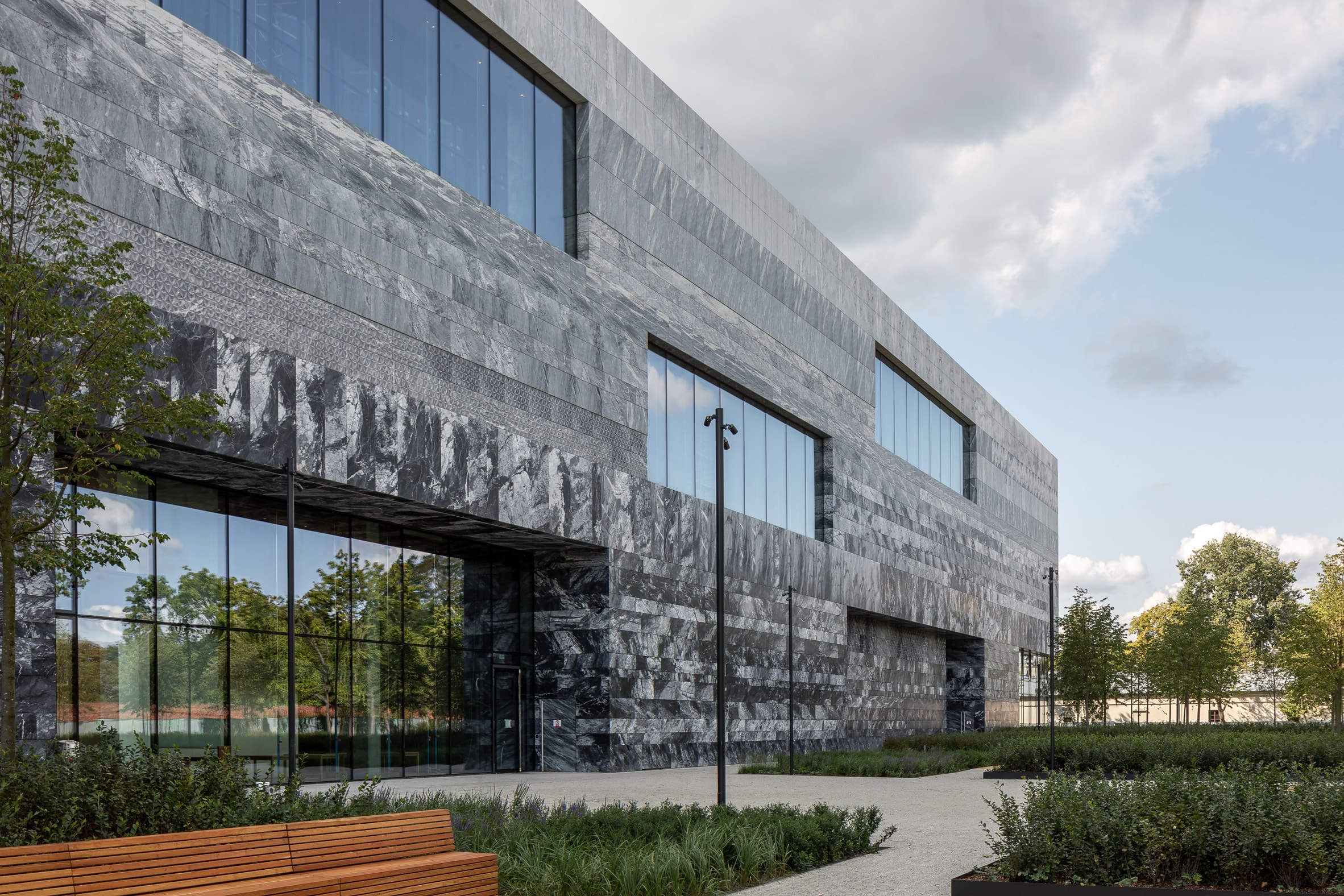
The building that houses the Museum of History is clad in several layers of marble, chosen to create an ‘archaeological cross-section‘ that relates to different periods of Polish history. Each marble slab is also different and unique, encapsulating extraordinary and individual events, just like history itself.
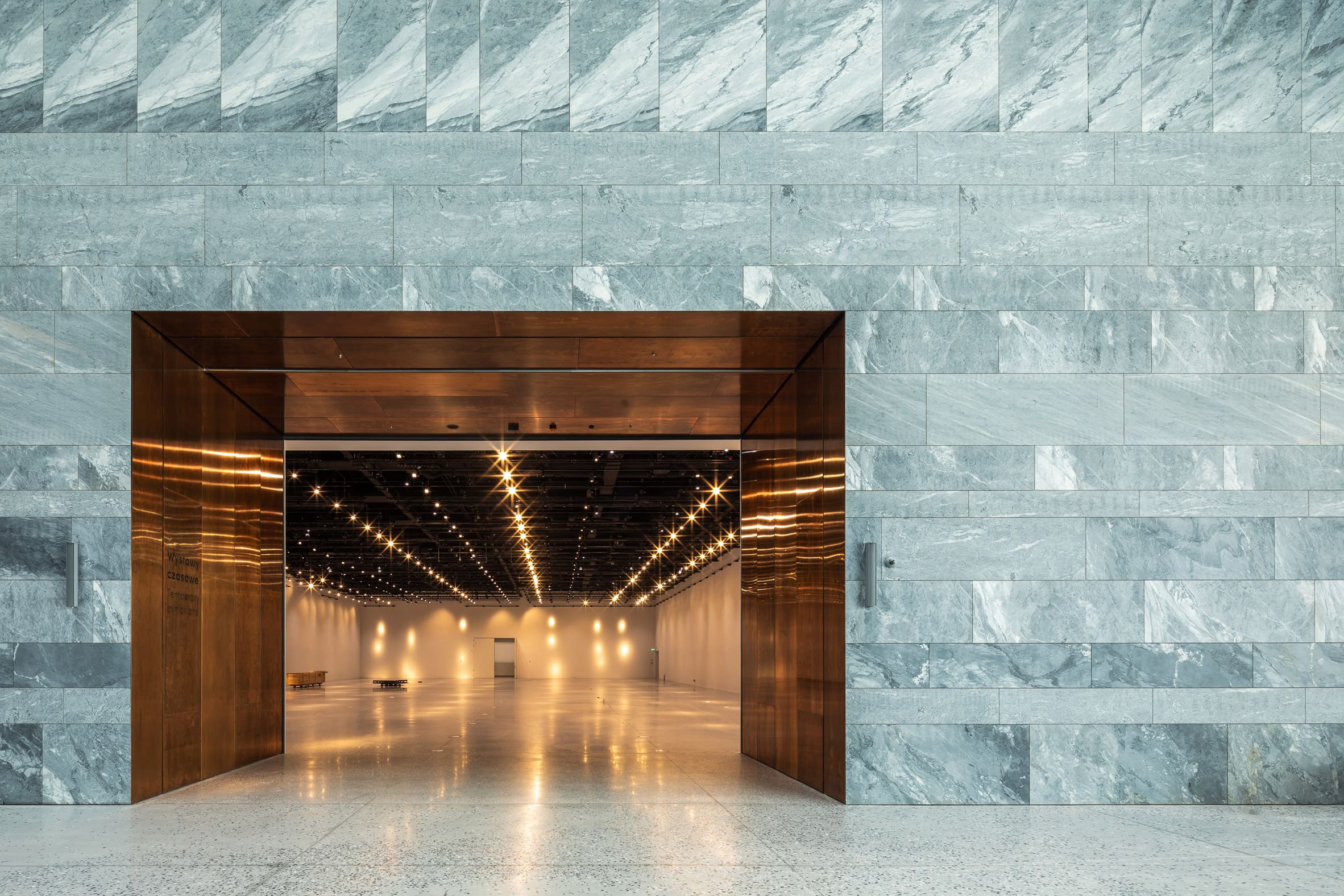
The interior is also in marble, softened by the warm presence of wood, polished bronzed brass and antique steel elements.
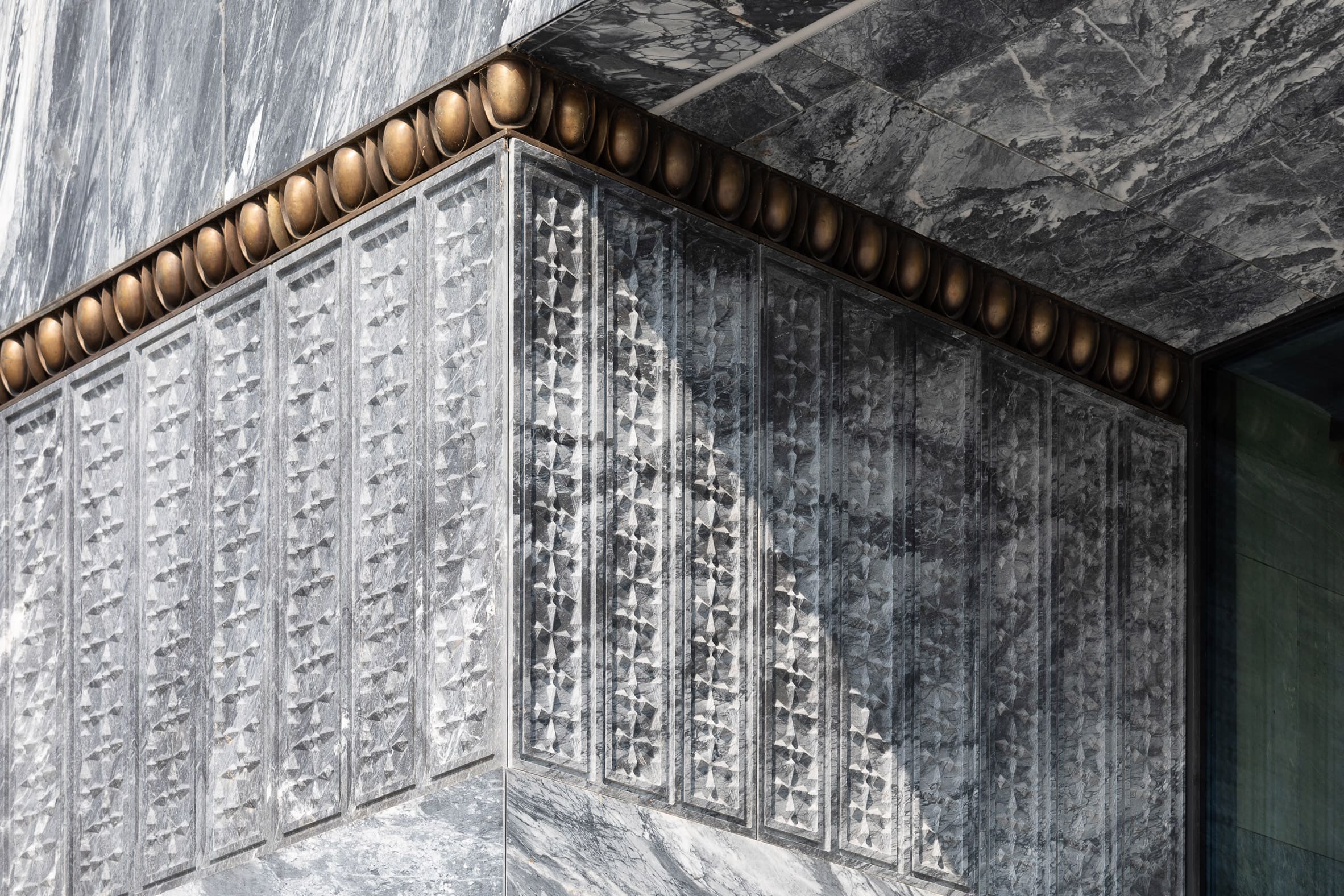
BAPS HINDU MANDIR – Abu Dhabi, United Arab Emirates
A symbol of the enduring bond between India and the United Arab Emirates, the Baps Hindu Mandir in Abu Dhabi is a jewel of marble architecture and the first traditional Hindu temple in the Middle East to be built in natural stone using traditional Indian techniques.

The interlocking blocks of red sandstone and Italian marble were hand-carved by over 2,000 artisans in Rajasthan and Gujarat and assembled on site in the UAE, using over 20,000 tonnes of stone without the use of reinforced steel or concrete.
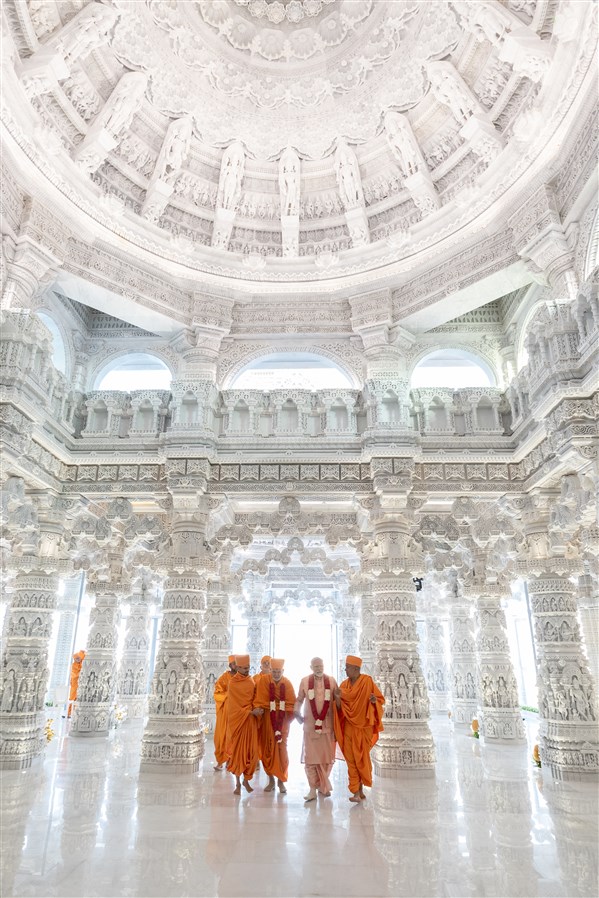
The temple is richly decorated with over 400 pillars carved in white marble, each with a different theme and design. The carvings depict flora and fauna, alternating with ceremonial processions and illustrations of the phases of the moon and stars, and are also found in the interior, corbels and domes of the building.
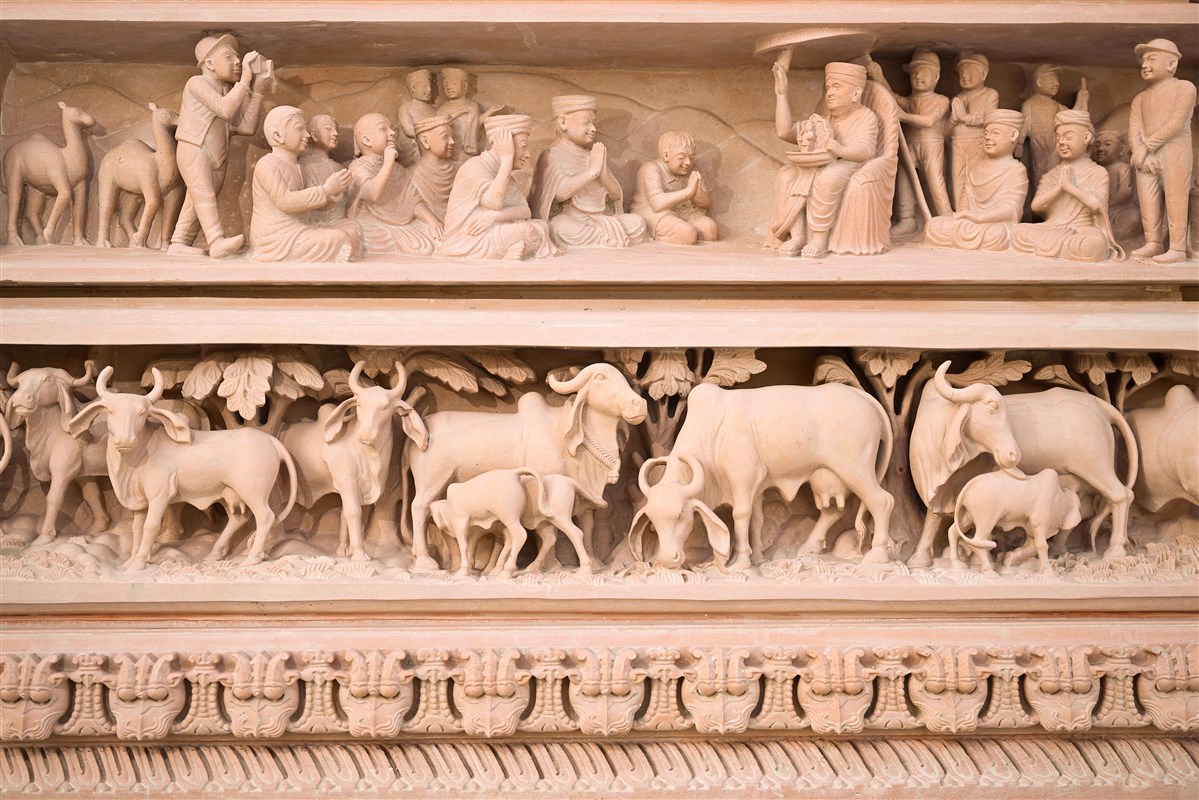
UBS HEADQUARTERS – Zurich, Switzerland
Financial services company UBS commissioned architects EM2N to renovate its historic headquarters at 45 Bahnhofstrasse in the centre of Zurich and create a new marble architecture, a contemporary structure with an elegant aesthetic.
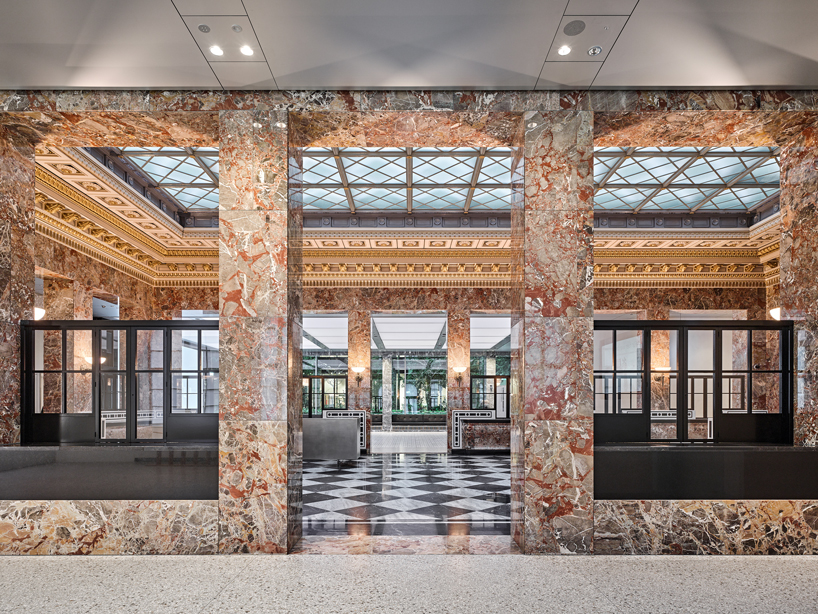
By cleverly blending marble and greenery, restoring the existing architecture and its historicity, and enhancing the striking façade and imposing historic rooms, UBS is making its origins clear while anticipating its promising future.
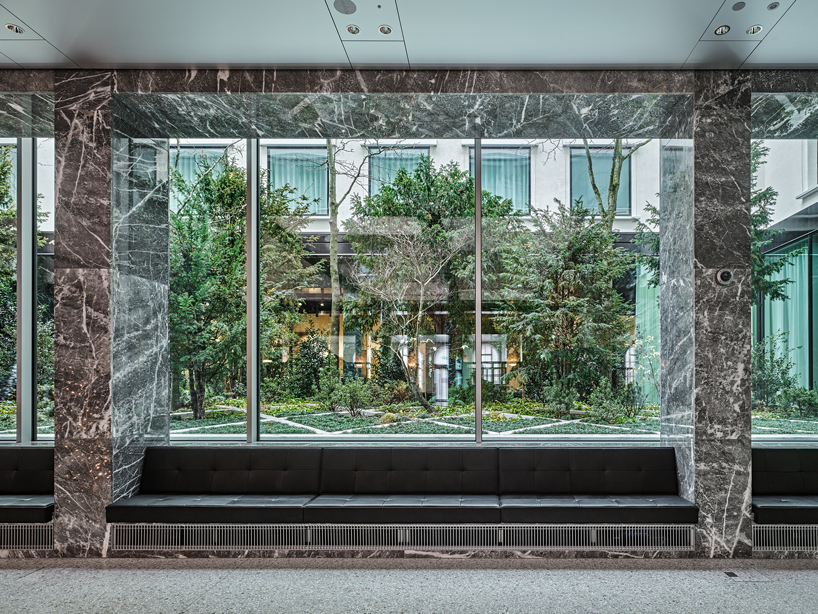
The entire building was designed and built around the stone paving and glass skylight of the Münzhof, using a combination of materials (marble, glass, aluminium) that are in perfect harmony with each other: a contrast between old and new, between light and shadow, between geometries and curves.
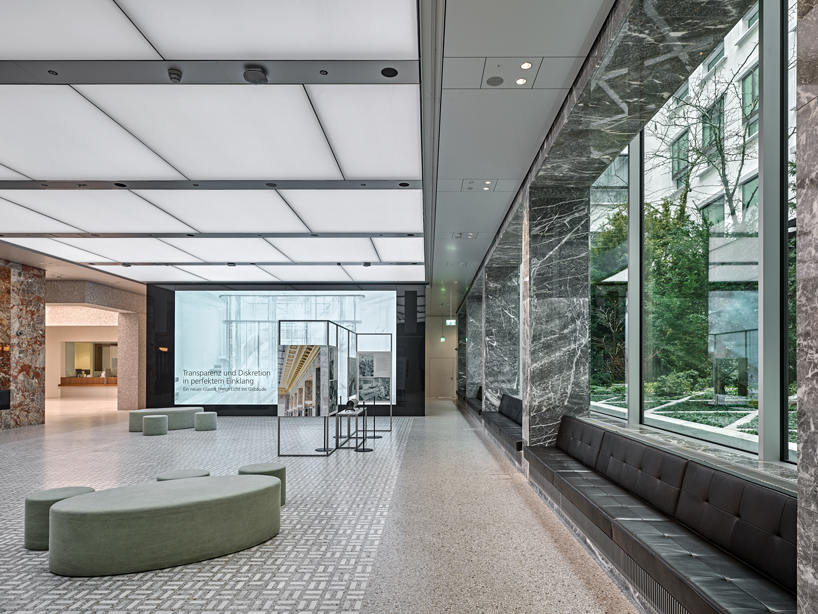
PALEIS HET LOO – Apeldoorn, Netherlands
Paleis Het Loo, the last of the marble buildings we present today, was originally built in 1686 as a royal hunting lodge for King William III and Queen Mary; today it is a museum with original furniture, objects and paintings from the House of Orange-Nassau.
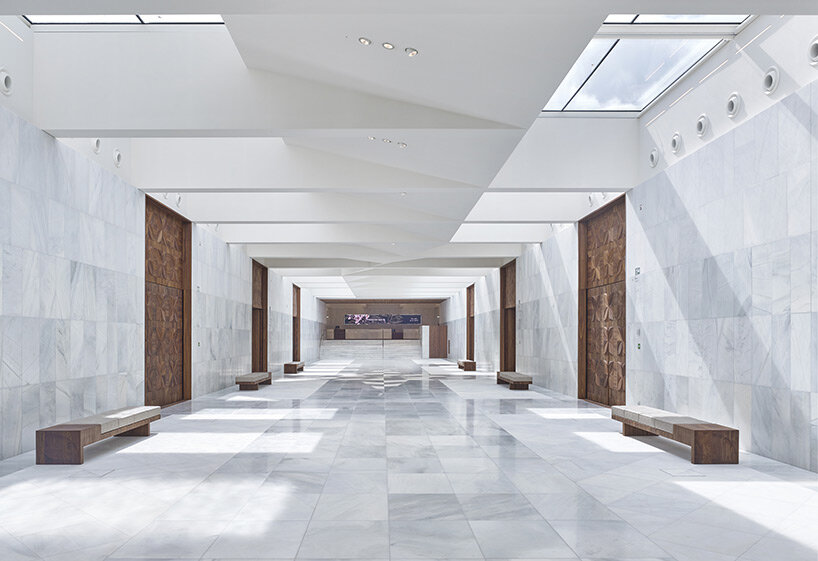
KAAN Architecten has carried out an ambitious transformation of this building: more than 5,000 square metres of new rooms and underground spaces, while preserving the original exterior of the building, which has remained unchanged for almost 350 years.
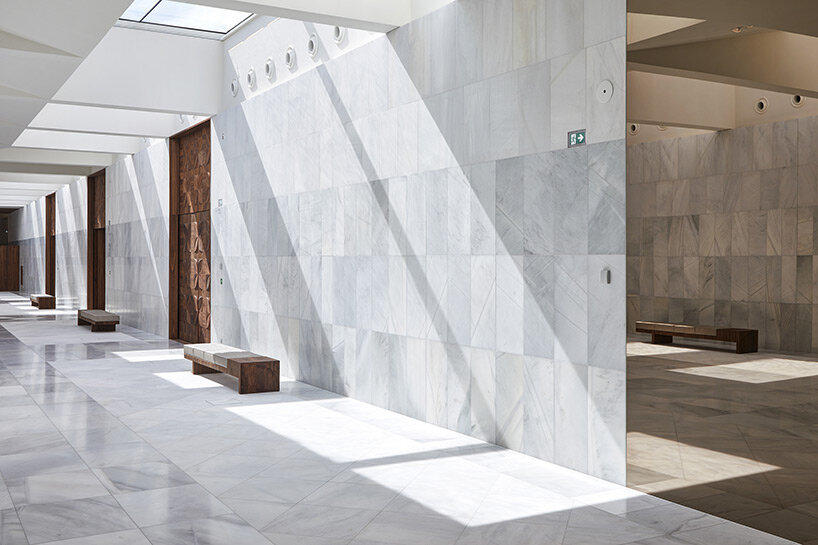
The materials and finishes of the new building are elegant and understated: a harmony of walnut wood, marble with sandblasted polished surfaces, and opulent fabrics with metallic threads, reminiscent of the gardens and ornate rooms of the original building.
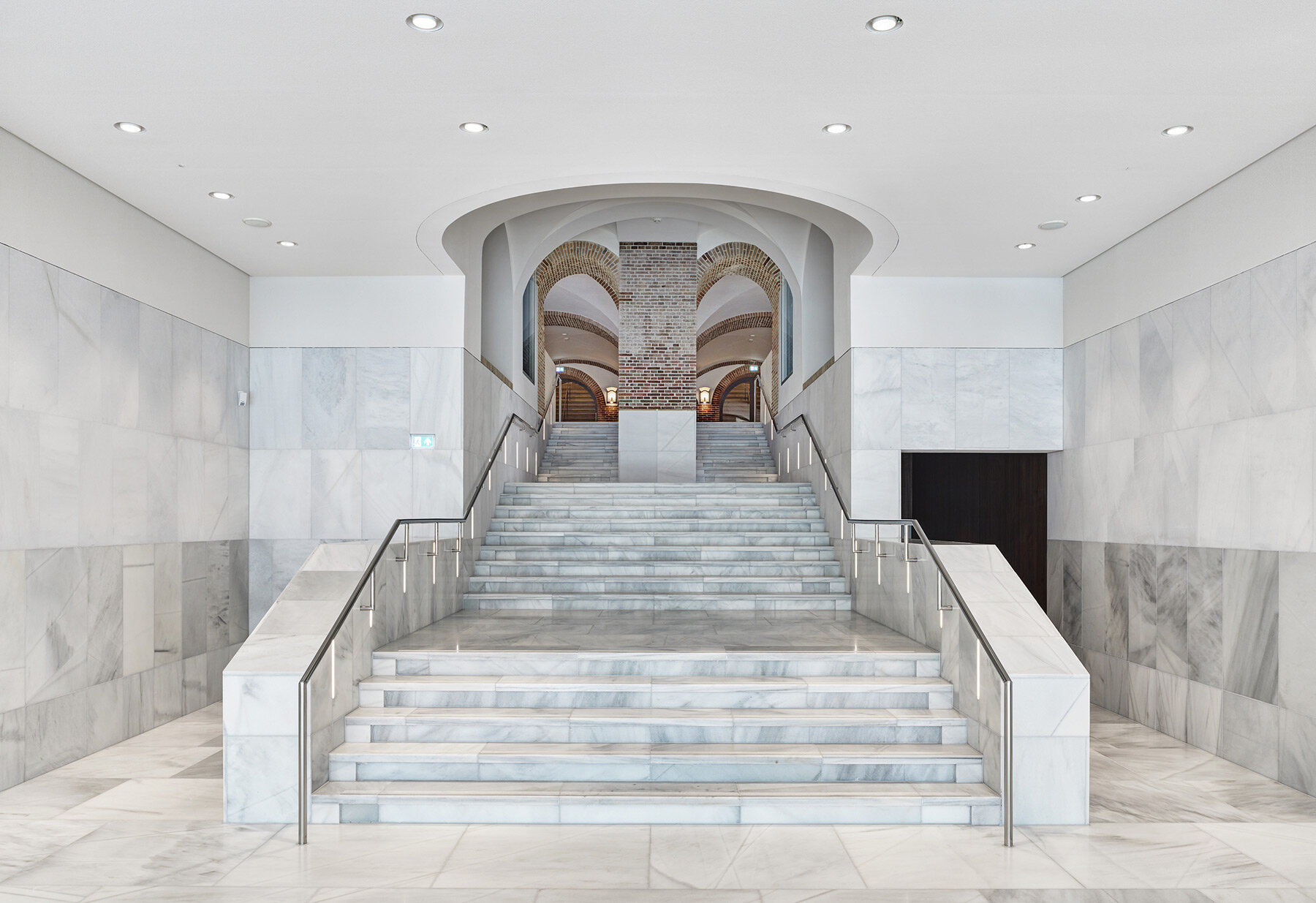
Which is your favourite marble architecture? Leave a comment and let us know if you enjoyed this article.


No Comments